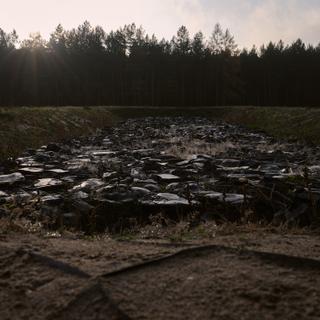


In Poland, the Holocaust's tormented memory
InvestigationAs the world commemorates the 80th anniversary of the discovery of Auschwitz-Birkenau, Poland continues to debate the place of the extermination of the Jews in its national memory.
For more than 20 years, Elzbieta Janicka has been visiting Treblinka at least twice a month. She knows every nook and cranny of this camp, and some things are known only to her. Like the little cache where she has deposited bone fragments, teeth, bits of spectacle frames, shards of gas chamber tiles or a striking dental prosthesis with its bright red palate, all gleaned from her visits.
On the site of Treblinka II, the extermination camp where almost a million Jews were burned on gigantic open-air pyres, you find these small traces of humanity everywhere, even more so in summer when the moles come to stir up the soft earth.
"This deserted expanse surrounded by barbed wire has swallowed up more human lives than all the world's seas and oceans since the dawn of mankind," wrote Soviet journalist Vasili Grossman (1905-1964) in The Inferno of Treblinka (Ed. Arthaud, 1945). Arriving on the scene in September 1944, he observed how the stormy, bottomless land, "unwilling to be complicit," spewed out the evidence the Nazis sought to bury.
But that is not why Janicka is here. The 54-year-old researcher at the Institute of Slavic Studies, at the Polish Academy of Sciences is incensed at the way in which Poland's national institutions tell the story of the Holocaust. "It's as if a crusade had been launched. Firstly, to assert the symmetry of Polish and Jewish destinies, and secondly, for Polish primacy in martyrdom." She says she sees evidence of this everywhere.
It was in Poland that almost 5 million of the 6 million Jewish victims of the Holocaust were killed. The Nazis set up all their extermination camps there: Auschwitz, Belzec, Chelmno, Majdanek, Sobibor and Treblinka. "This imposed on society and the state a unique duty of remembrance, a duty to maintain the spaces of horror and to symbolically commemorate one of the greatest human catastrophes," said Polish historian Jan Grabowski, professor at the University of Ottawa, Canada. "Poland, in spite of itself, has become the reluctant guardian of the memory of the Holocaust."
You have 89.3% of this article left to read. The rest is for subscribers only.
